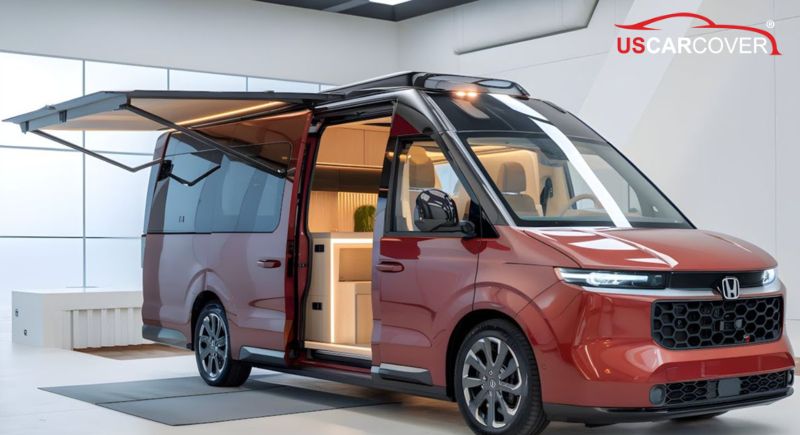
Camper vans are increasingly popular among van life fans, with many new electric and plug in options. Honda has teased a brand new 2026 Honda Camper Van concept aimed at a highly comfortable “mobile room.” Although full official specs are not available yet, the model is expected to feature an electric or hybrid powertrain and an upscale interior. Notable rivals include the VW ID.Buzz Camper - a camper build based on the 2026 ID.Buzz EV - and the Ford Transit Trail - an off road oriented van ready to be converted into a camper. The article below analyzes each model’s price, carrying capacity, efficiency, long term maintenance, features, and fit for use, so you can decide whether to wait for Honda’s camper or choose another route.
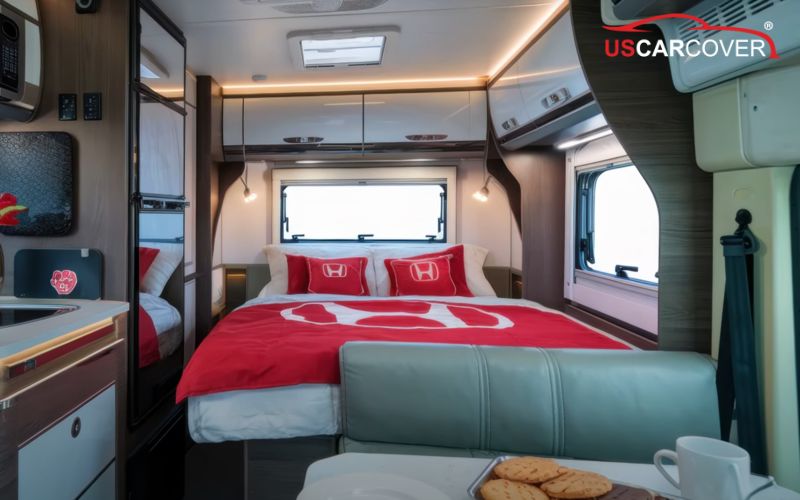
Related Articles: 2026 Lexus LX600 Review: Is It Worth 100,000 Dollars
Quick introduction to the models
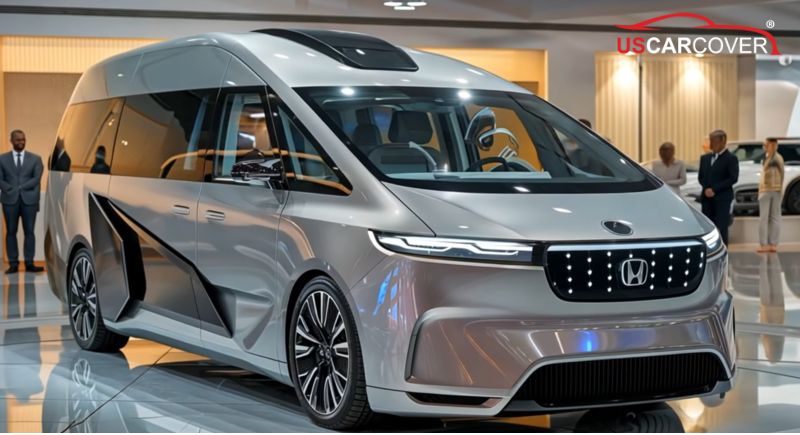
2026 Honda Camper Van Revealed (concept): Honda’s new concept with aerodynamic styling and a premium interior that integrates a kitchen, sleeping area, and a compact wet bath. It is expected to use an electric or hybrid system with a sizable battery and possibly roof solar. Pricing is unknown, but many outlets speculate a high end bracket of about 60,000 to 120,000 dollars.
VW ID.Buzz Camper (2026): The camper version of Volkswagen’s three row ID.Buzz EV. It offers up to seven seats, dual sliding doors, a spacious interior with multiple USB ports, a 12.3 inch infotainment screen, optional HUD, premium audio, and ambient lighting. Starting prices in the U.S. are about 62,000 to 66,000 dollars depending on trim. Higher trims can add a 14 speaker Harman Kardon system, HUD, 360 camera, powered sliders, and a retractable tow hook. ( VW ID.Buzz (2026) - a three row EV inspired by the classic Microbus. It delivers generous cabin space, great outward visibility, and modern features. Photo: Michael Simari / Car and Driver).
Ford Transit Trail (2023–2024): A special Transit variant aimed at van life. It uses a 3.5L EcoBoost V6 rated at 310 hp, standard all wheel drive, 30.5 inch all terrain tires, and a 3.5 inch lift for added off road clearance. A 10 speed automatic is standard, with up to 6,500 lbs tow capacity and roughly 9,000 lbs GVWR. The Trail is configured with two front seats and a bare rear cargo area, plus a factory inverter, 110V outlets, and a large fuse box so owners can wire kitchen gear, fridges, and lights easily. It launched around 67,590 dollars including fees. Although Ford discontinued the Trail package for 2025, used inventory and similar upfitted builds remain widely available.
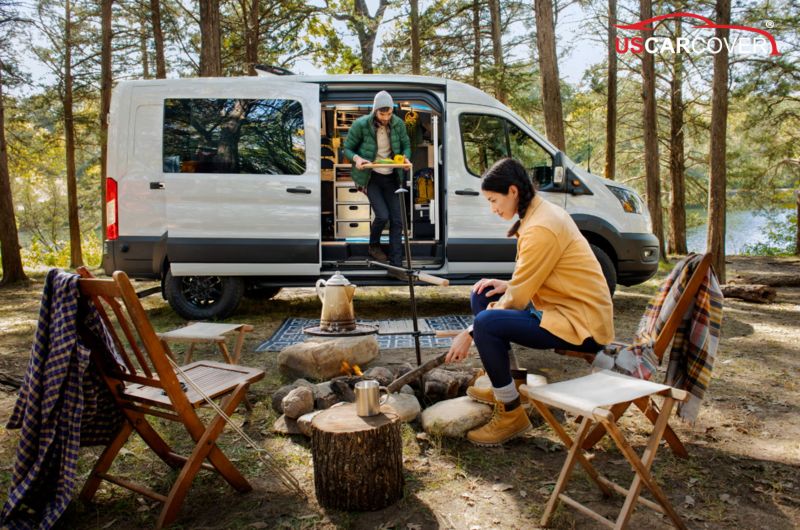
Related Articles: 2026 Toyota Corolla Cross Hybrid Review: S, SE, or XSE - which trim makes the most sense for urban America?
Detailed comparison of key factors
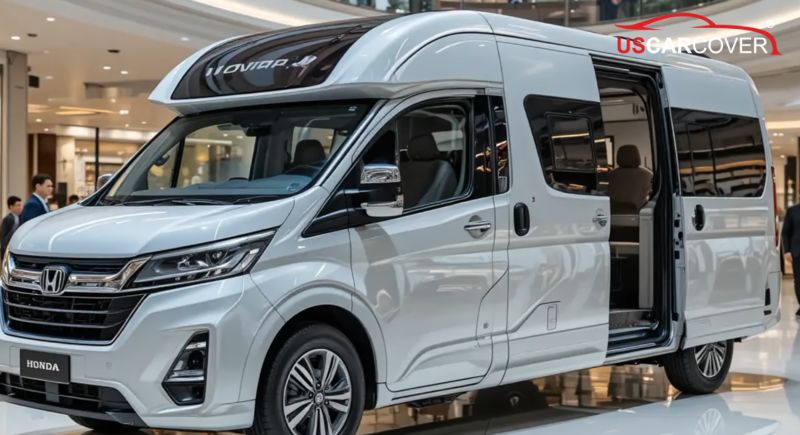
Related Articles: 2026 Toyota RAV4 Review: Is it still worth buying in the all-electric era?
Price (up front investment): The 2026 Honda Camper Van has no official pricing yet, but expectations place it among premium campers that can reach six figures. The VW ID.Buzz Camper sits around 62,000 to 66,000 dollars for core trims. The 2023 Ford Transit Trail debuted at 67,590 dollars with fees. In other words, Ford’s entry price is similar to ID.Buzz but provides a purpose ready base for van life with lifted suspension and off road hardware.
Carrying space and seating: The ID.Buzz offers three rows for up to seven passengers, which is convenient for families or small groups. The Transit Trail cargo configuration has two front seats and an open rear for custom camper builds, so the space is highly flexible. The 2026 Honda Camper Van is likely optimized for 2 to 4 people with a compact but luxurious interior that prioritizes comfort over maximum seat count.
Powertrain and energy use: The ID.Buzz uses a rear or all wheel drive electric setup, with usable battery capacity that supports daily ranges suitable for road trips. Real world highway results depend on speed, weather, and load, but the ID.Buzz targets competitive EV efficiency for a three row van. The Transit Trail’s 3.5L turbo gas engine and lifted stance mean significantly higher fuel consumption on the highway, commonly around the high teens in mpg. If Honda’s camper launches as an EV or strong hybrid, it will likely outperform gas vans on operating costs. Many future camper vans are expected to integrate roof solar and auxiliary batteries; a 1,500W solar array, for instance, can add meaningful daily charge in sunny conditions, which is especially useful off grid.
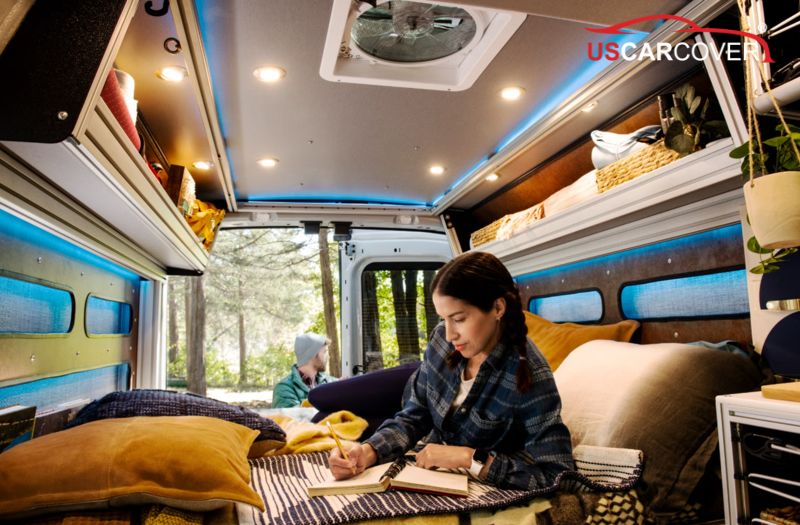
Related Articles: 2026 Chevrolet Suburban Review Can V8 & Diesel Still Beat Hybrid?
Maintenance and long term costs: EVs and strong hybrids typically have fewer wear items than gas vans. There is no engine oil to change, and regenerative braking reduces pad wear. Studies show EV maintenance cost per mile can be substantially lower than ICE vehicles. In contrast, the Transit Trail uses gasoline, requires regular oil changes, and its larger all terrain tires are pricier and can wear faster. Factory electrical pre wiring on the Trail simplifies upfits but still adds systems to maintain. If the Honda Camper Van is an EV, expect lower maintenance but plan for battery health management over time.
Features and amenities: The ID.Buzz brings modern convenience: powered sliders, a large infotainment display, multiple USB ports, wireless connectivity, and advanced driver assistance. The Transit Trail is intentionally basic inside, with a factory inverter, a big fuse box, swivel front seats, and SYNC 4 on a 12 inch screen, leaving the rear empty for custom camper furniture. The 2026 Honda Camper Van is expected to arrive as a more complete “ready to camp” solution, with foldable bed systems, a compact kitchen, fridge, potentially a small wet bath, embedded connectivity, and advanced driver assistance. Some concept previews also highlight intelligent HVAC, electrochromic windows, water saving fixtures, and smart home style controls. While not all of that is confirmed, Honda appears to be targeting a premium camper experience more refined than a raw conversion platform and at least as modern as the ID.Buzz.
Fitness for purpose: If you want a modern electric van right now, the ID.Buzz Camper is a solid choice. It is quiet, spacious, and people friendly, though a full camping conversion still takes additional work. If you prefer off road capability, robust packaging, and full control over your camper interior, the Ford Transit Trail is an excellent base, despite higher fuel costs and a larger footprint. If you prioritize future facing tech and are willing to wait, the 2026 Honda Camper Van promises a new experience: advanced electrification, a smart interior, and premium comfort. The tradeoff is the uncertainty of pricing, timeline, and real world reliability until it launches.
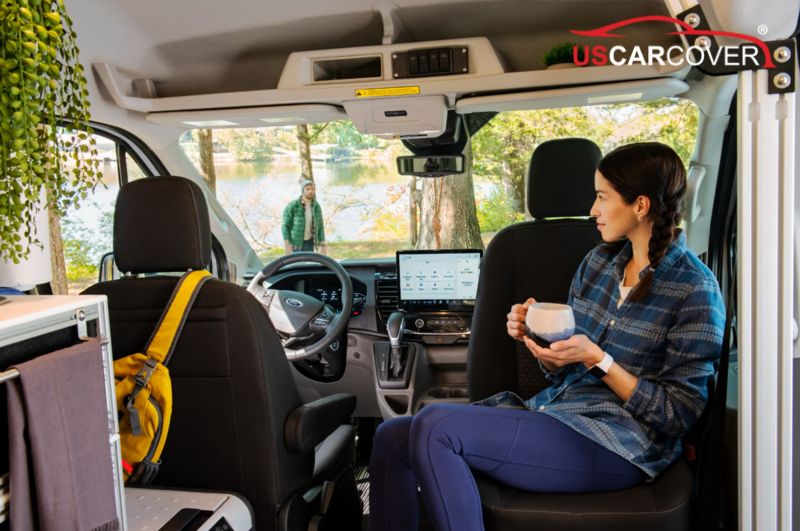
Related Articles: 2026 Toyota Hilux Review The Truth After I Drove It
Usability in city and long distance: A good camper must be flexible. Honda Camper Van: a tidy footprint and quiet operation that suits garages and street parking. On road trips, the factory living space lets you sleep legally where allowed with minimal setup. ID. Buzz Camper: born for the city with a tight turning circle, clean operation, and calm manners. For long distances you plan charging stops, with lower energy cost per mile. Transit Trail: tall and large, so it is less maneuverable in tight urban cores, yet it shines on rough sites, unpaved access roads, and deep gutters. On interstate runs you do not rely on charging infrastructure.
Family suitability: Family use demands more than seats. It requires quiet, safety, and kid friendly amenities.
- Honda Camper Van: if shipped as a ready camper, the big win is a clean galley, real storage, and a proper sleeping zone. Kids get a defined space while parents can rotate cooking and resting without leaving the van. If HVAC, sound insulation, and lighting are done right, every stop feels like sleeping at home.
- ID. Buzz Camper: three rows make school runs and multigenerational trips easy. A flat floor, powered sliders, and many charge ports support kids’ learning and entertainment devices. To sleep overnight comfortably, you still need a fold bed kit and blackout shades.
- Transit Trail: the best canvas for bunks, bike bays, large galleys, and adventure gear. Outdoorsy families will love the flexibility. The tradeoff is size and height, which makes tight school lanes or garages trickier, and you should practice safe child seat access and step in and out routines.
Family takeaway: quiet, ready comfort with minimal DIY favors Honda. Daily people moving favors the ID. Buzz. Maximum flexibility for adventurous families that do not mind a big rig favors the Transit Trail

Related Articles: 2026 Honda Prelude Review: Not Just Showroom Pretty, A One Week Real World Test
Overall value for U.S. users who want flexible camper vans
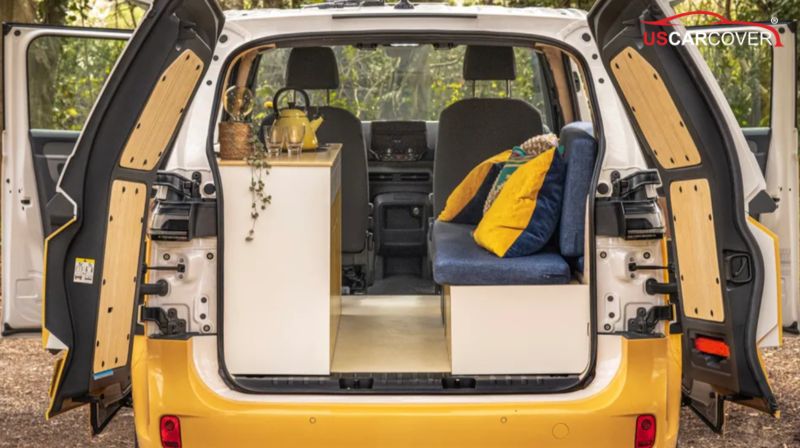
Honda Camper Van: value comes from a turnkey interior and fewer unknowns at delivery. It fits busy owners who want to go now, enjoy premium comfort, and benefit from lower energy costs if EV or hybrid.
ID. Buzz Camper: value comes from city friendly EV driving, many seats, a quiet cabin, and safety, then gradual upgrades to camper modules. It suits young urban families.
Transit Trail: value comes from durability, load capacity, light off road capability, and infinite upfit freedom. It suits builders who want to travel far, haul gear, and avoid charging constraints.
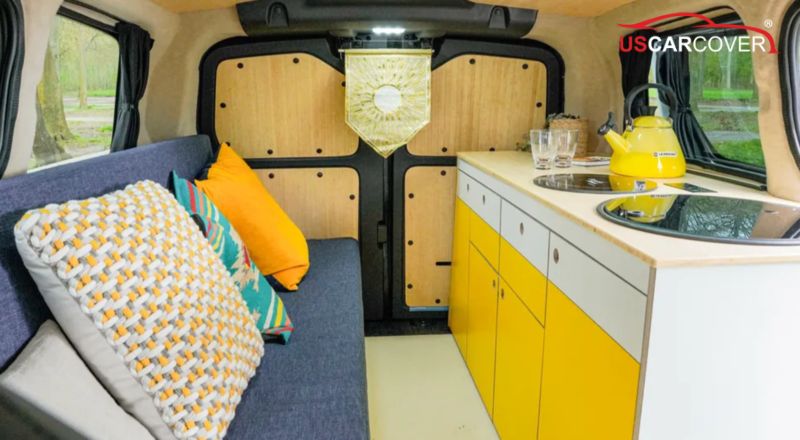
Related Articles: 2026 Ford F-100 (EV & Gas) Review vs Ford F-150 XL – Which Pickup Fits Your Needs?
Should you wait for Honda or choose a competitor now
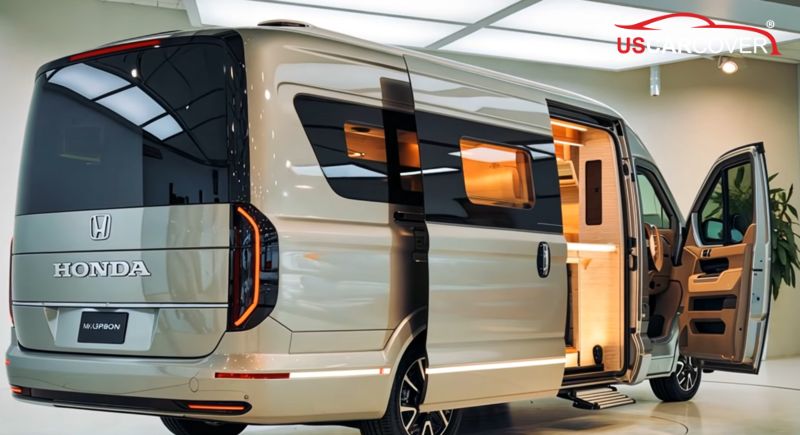
Wait for Honda if you want a factory ready camper with modern tech, quiet operation, premium comfort, and lower operating costs over time.
Pick the ID. Buzz Camper if you need a vehicle now for urban family life, want a clean and quiet EV, and are fine adding camper modules later.
Pick the Transit Trail if you need a big shell and light off road ability, want total upfit freedom, and prefer the refuel anywhere convenience on long routes.
Related Articles: 2026 Ford F-150 Review: 7 Trims and Packages to Consider (including the return of King Ranch and Platinum 2WD)
Protect your van with a car cover - the essential “companion”
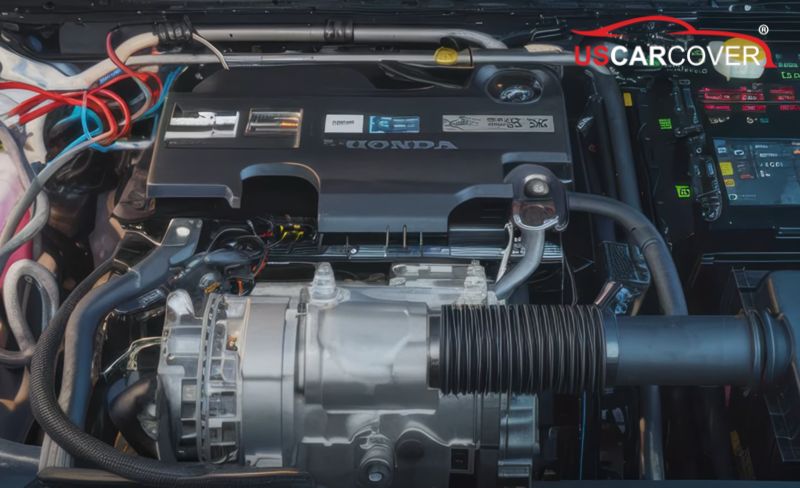
No matter which van you choose, campers parked outdoors degrade quickly from UV, rain dust, tree sap, bird droppings, and salty coastal air. A Car cover in the correct size helps:
Block UV and water to limit paint fade, plastic aging, and seal mildew.
Reduce micro scratches when parked close to other vehicles or in windy, dusty lots.
Keep the cabin cooler, which eases HVAC load after long parking.
Preserve resale value by minimizing swirl marks on paint and gloss black trim.
Selection tips: for outdoor parking, choose multi layer breathable fabric with an ultra soft liner, anti static treatment, and reinforced stitching. For garage storage, an indoor satin Car cover highlights the body lines and keeps dust off. Always choose a custom fit Car cover sized to your van to avoid flapping abrasion in gusty winds.
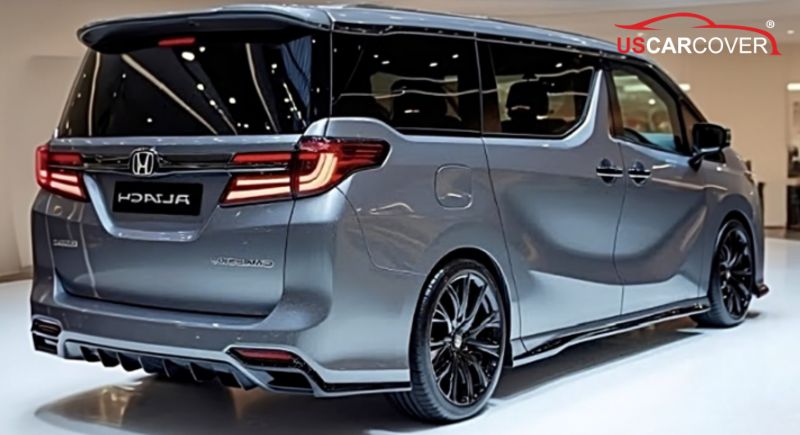
In short, the ID.Buzz Camper stands out for modernity and EV efficiency, but it still needs camper conversion for beds and a full kitchen. The Transit Trail excels off road and is conversion friendly, yet it drinks more fuel. The Honda Camper Van could combine the best of both worlds - clean propulsion and an upscale, ready to camp interior - but you will need to wait until 2026 to see pricing and specs. Whether to buy now or wait depends on your priorities: price, technology, comfort, or off road capability, and your willingness to wait for a future model.
